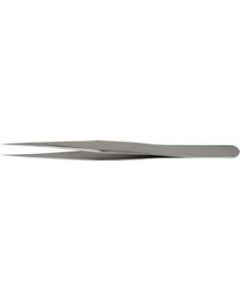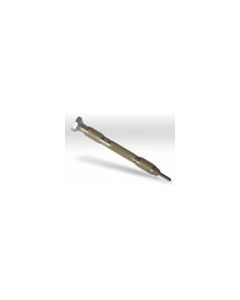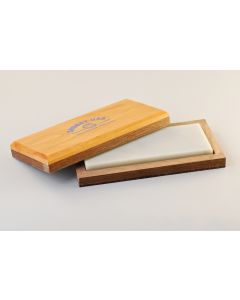Araldite, Embed 812 (Epon-812)
Zuammensetzung nach Mollenhauer (Epon-Araldit). Für harte Blöcke und hohen Kontrast. Blöcke lassen sich leicht schneiden. Stain Tech., 39,11 (1964)
Produktdetails
Beschreibung
The combination of different embedding resins is popular because these kits blend the best qualities of each individual resin into one.
In 1964, Mollenhauer developed an Araldite-Epon (Embed-812) mixture for embedding plant tissue, with particular interest in preserving the plant cell wall. It has also shown to be successful with animal tissue. Sectioning with this mixture of resins has been proven to be easier than with each individual resin and the thermal stability of araldite and the image contrast of EM-bed-812 have made this a very successful blend.
Recommended Procedure:
Fixation: Tissue can be fixed in a wide range of fixatives. One of the more commonly used fixatives is an alde-hyde (i.e. glutaraldehyde) followed by osmium tetroxide.
Dehydration: There are many different dehydration schedules that can be followed. A typical one is as follows:
- 70% Ethanol for 10 minutes
- 100% Ethanol for 10 minutes100% Ethanol for 15 minutes
- 100% Propylene Oxide for 15 minutes
- 100% Propylene Oxide for 15 minutes
**NOTE: Longer times may be required for some large samples.
Mixing Instructions:
- Embed-812: 25ml (27.5g)
- Araldite 502: 15ml (17.0g)
- DDSA: 55ml (55.0g)
- DMP-30: 1.5–1.9ml (1.45–1.8g)*
- *Or BDMA: 2.4–2.8ml (2.15–2.51g)
* For better penetration and stability in place of DMP-30 recommend BDMA.
Slight variation of the accelerator (DMP-30 or BDMA) will drastically affect the color and brittleness of the block.
For larger batches increase each component proportionally.
Prior to measuring and mixing the resin and the anhydride should be warmed (60°C) to reduce their viscosity. Thorough mixing is imperative to be able to achieve uniform blocks.
Although the mixture can be stored for up to 6 months at 4 to 8°C in a tight closed container. Highly recommended that freshly prepared embedding medium always the choice. If you choose to store the mixture, you should warm it thoroughly prior to adding the accelerator.
Infiltration: It is recommended that for all of the infiltration steps, a specimen rotator should be used (#E71780-10).
- Drain the tissue of most of the propylene oxide, leaving a little so the tissue does not dry out.
- Replace the solvent with a 1:1 solution of propylene oxide:embedding medium and allow it slow rotating for at least one hour at room temperature.
- Remove the mixture, replace it with 100% embedding medium and slow rotating for 6-12 hours at room temperature.
- Replace the old mixture with fresh embedding medium and allow it to slow rotate for at least 2 hours.
Embedding: This may be done in BEEM Capsules (embedding capsules #E70020) or a flat embedding mold (#E70900). Transfer each sample to a dry capsule or mold and fill the mold with embedding medium. Cure the medium in an oven at 60°C for 12 hours or until it is hard. Better sectioning properties of certain samples may be achieved if a time of 24 hours in the oven is used.
Blocks can be trimmed and sectioned after the blocks return to room temperature.
Reference: Mollenhaurer, H.H. (1964), Stain Technology, 39, 11.
Weitere Informationen
| Anwendung |
Einbettung
|
|---|---|
| Basis |
Epoxy
|
| Gebotszeichen |
Augenschutz benutzen

Handschutz benutzen

|
| Signalwort |
Gefahr
|
| Symbol GHS |
GHS07

GHS08

GHS09

|
| Bestandteile | 450ml Embed-812, 450ml Araldite 502, 450ml DDSA, 50ml DMP |
| Versandklasse |
Gefahrgut LQ
|
| Arbeitsbereich |
Elektronenmikroskopie
|
| SDB (mehrsprachig) | E14900, E13710 |
| SDB (mehrsprachig) | E13600 |
| SDB (mehrsprachig) | E10900 |
| SDB (mehrsprachig) | E11400 |














